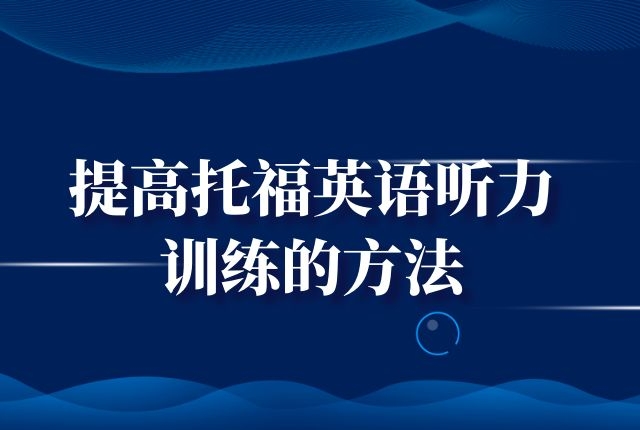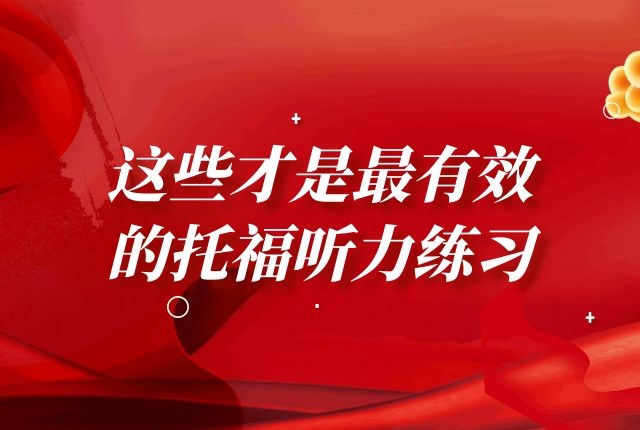托福听力学习的关键点有哪些?
托福备考相信学生知道的备考方法有很多,不同的备考学生方法不同,那么大家知道托福听力学习的关键点有哪些呢?前面我们分享了托福听力考试中对话和讲座的行文逻辑和出题逻辑,下面为大家整理分享几个托福听力学习的几个关键点,学生们可以参考一下,希望可以帮到大家!
1. 多记名词!
2. 留心speaker的语气、停顿;
3. 做题时保持客观,不要yy原文没有的细节,听到什么就是什么。
关于笔记:
文本分析完之后,要重听一次,并重新做一遍笔记!这很重要,边记边依照行文逻辑去尝试预测内容。听完后,在笔记上标注对应的出题位置,看看自己的笔记是否还是漏记了关键信息。
修改自己的笔记,删除不必要的信息(比如一些形容词等),看看哪些可以简写的单词没有简写等。
TEXT: TPO 13 Lecture 4 Astronomy
【开头段】Professor:
OK, I wanna go over the different types of meteorites, and what we've learned from them about the formation of Earth, and the solar system. Uh…the thing is what's especially interesting about meteorites is that they come from interplanetary space, butthey consist of the same chemical elements that are in matter originating on Earth, just in different proportions. But that makes it easier to identify something as a meteorite, as opposed to…to just a terrestrial rock. (目的主旨题①)—
—————————————————————————————
【主体段1】:主要是说meteorites是从Comet和asteroid来的,并进一步介绍分别是由什么构成的
soto talk about where meteorites come from, we need to talk about comets and asteroids, which basically...they’re basically made up of debris left over from the origin of the solar system 4.6 billion years ago.
Now I'm going a bit out of a order here…um…I'm not going to go into any depth on comets and asteroids now, but we'll come back later and do that. For now, I'll justcover some basic info about them.
OK, comets and asteroids. It might help if you think of...remember we talked about thetwo classes of planets in our solar system? And how they differ in composition? The terrestrial planets--like Mars and Earth--composed largely of rocks and metals, and the large gas giants, like Jupiter.(比较细节题②-1)
Well, the solar system alsohas two analogous (对比逻辑)classes of objects, smaller than planets--namely, asteroids and comets.(比较细节题②-2)Relatively near the sun, in the inner solar system, between Jupiter and Mars to be precise, we’ve got the asteroid belt, which contains about 90 percents of all asteroids orbiting the sun. These asteroidsare…uh…like the terrestrial planets,in that they're composed mostly of rocky material and metals.(比较细节题②-3)
Far from the sun, in the outer solar system, beyond Jupiter's orbit, temperatures are low enough to permit ices to form out of water and…and out of gases like methane and carbon dioxide. Loose collections of these ices and small rocky particles form into comets. So comets are similar in composition to the gas giants.(比较细节题②-4)
————————————————————————
【主体段2】 前面分别介绍了asteroid 和comet,现在开始真正开始说meteoroid从哪里来,然后有区分了3个不同的和meteor有关的概念。
Both comets and asteroids are...typically are smallerthan planets. An even smaller type of interplanetary debris is the meteoroid.And it's from meteoroids that we get meteors and meteorites."Roids" are, for the most part anyway, they are just smaller bits of asteroids and comets. (内容细节题③)
When these bits enter Earth’s atmosphere, well, that makes them so special that they get a special name. They're called meteors.Most of them are very small, and they burn up soon after entering Earth’s atmosphere. The larger ones that make it through the atmosphere and hit the ground are called meteorites. So meteorites are the ones that actually make it through.(对比细节题④)
—————————————————————————
【主体段3】开始说三个不同的陨石类别
Nowwe've been finding meteorites on Earth for thousands of years, and we've analyzed enough of them to learn a lot about theircomposition,most come from asteroids, though a few may have come from comets. So essentially they are rocks, and like rocks, they're mixtures of minerals. They are generally classified into three broad categories--stones, stony irons and irons.Stone meteorites, which we refer to simply as, uh, stones, are almost entirely rock material. Theyactuallyaccount for almost all of the meteorite material that falls to earth.(转折细节题⑤-1)
Buteven so, it's rare to ever find one. I mean, it's easier to find an iron meteorite or a stony iron. (转折细节题⑤-2)
——————————————————————
【主体段4】 主要在介绍为什么stone meteorite最少被发现
Anyone guess why? Look at their names. What do you think iron meteorites consist of?
Student:Mostly iron?
Professor:Yeah… iron and some nickel, both of which are metals. And, if you're trying to find metal?(重听题⑥)
Student:Oh! Metal detectors!
Professor:Right, thank you. At least that's part of it. Stone meteorites, if they lie around exposed to the weather for a few years, well, they're made of rock, so they end up looking almost indistinguishable from common terrestrial rocks--ones that originated on earth. So it's hard to spot them by eye. Butwe can use metal detectors to help us find the others, and they're easier to spot by eye. So most of the meteorites in collections, uh, in museums, they'll be...they're iron meteorites, or the stony iron kind, even though they only make up about 5 percent of the meteorite material on the ground.
无【结尾段】
上面就是培顿国际教育老师为大家分享的关于托福听力学习的几个关键点,有兴趣的学生可以了解一下,想要考托福地学生注意了,更多关于托福考试的信息和资料登录培顿教育官网点击客服聊天,找客服老师咨询,赶快学起来吧!
- 上一条: 什么样的方法提高托福听力
- 下一条:托福听力的答题技巧和方法有哪些?
猜你喜欢
-
 如何练习听力才能事半功倍?2020-03-09当谈到提高我的托福听力技巧时,我只有两个经验:经常听,沉浸在英语环境中。但就我个人的学习经历而言,我的听力资源和环境有限。我的学校里既没有外国人也没有互联网,因为每天24小【 查看详情 】
如何练习听力才能事半功倍?2020-03-09当谈到提高我的托福听力技巧时,我只有两个经验:经常听,沉浸在英语环境中。但就我个人的学习经历而言,我的听力资源和环境有限。我的学校里既没有外国人也没有互联网,因为每天24小【 查看详情 】 -
 提高托福英语听力训练的方法2020-03-09福听力是一个让学生很苦恼的问题,我想大家都应该有这个体验吧。曾经我也因为自己的托福听力太差而选择了报托福培训班。高一的时候,看到周围很多同学上高中英语培训班【 查看详情 】
提高托福英语听力训练的方法2020-03-09福听力是一个让学生很苦恼的问题,我想大家都应该有这个体验吧。曾经我也因为自己的托福听力太差而选择了报托福培训班。高一的时候,看到周围很多同学上高中英语培训班【 查看详情 】 -
 这些才是最有效的托福听力练习2020-04-14英语对于很多学生来说是有比较感冒的,其中英语听力是最困难的。它必须要求学生有良好的的英语基础,同时英语听力也是要掌握技巧的。【 查看详情 】
这些才是最有效的托福听力练习2020-04-14英语对于很多学生来说是有比较感冒的,其中英语听力是最困难的。它必须要求学生有良好的的英语基础,同时英语听力也是要掌握技巧的。【 查看详情 】 -
 为什么听不懂?还不是你练习方法不对为什么听不懂?2020-05-12托福听力备考中很多同学都在努力的刷题,每套官方真题Official都刷了很多遍,但听力仍旧感觉吃力,最终考试成绩也差强人意。导致结果不理想的原因并不是不努力,而是用错了方法。【 查看详情 】
为什么听不懂?还不是你练习方法不对为什么听不懂?2020-05-12托福听力备考中很多同学都在努力的刷题,每套官方真题Official都刷了很多遍,但听力仍旧感觉吃力,最终考试成绩也差强人意。导致结果不理想的原因并不是不努力,而是用错了方法。【 查看详情 】 -
 如何提高英语听力的基础能力?2020-05-16托福听力考试在托福考试中占有很大的比例,即使你在进行其他科目考试的时候也会用到听力。比如口语对话,所以在托福考试当中,听力的能力尤为重要,那么我们如何提高自己的听力能力呢【 查看详情 】
如何提高英语听力的基础能力?2020-05-16托福听力考试在托福考试中占有很大的比例,即使你在进行其他科目考试的时候也会用到听力。比如口语对话,所以在托福考试当中,听力的能力尤为重要,那么我们如何提高自己的听力能力呢【 查看详情 】
热门阅读
随机阅读














